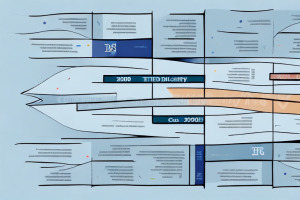Social Security disability benefits can be a crucial lifeline for individuals who are unable to work due to a disability. However, these benefits are not automatically granted to everyone. There are certain eligibility criteria that need to be met, and one such requirement is the five-year duration rule.
Understanding the Basics of Social Security Disability
Before diving into the specifics of the five-year duration rule, it is important to have a basic understanding of Social Security disability. SSDI, which stands for Social Security Disability Insurance, is a federal program designed to provide financial assistance to individuals who are unable to work due to a disability.
In order to qualify for SSDI, you must have a qualifying disability that meets the program’s definition of ‘disability’. This means that your condition must be severe enough to prevent you from doing any kind of substantial gainful activity and is expected to last for at least one year or result in death.
SSDI is funded through payroll taxes, with workers and employers contributing to the program. The amount of benefits you receive is based on your average lifetime earnings before becoming disabled. The Social Security Administration uses a complex formula to calculate your benefit amount, taking into account your earnings history and the number of years you have worked.
How Does Social Security Disability Work?
SSDI is funded through payroll taxes, which are deducted from the wages of workers in the United States. These taxes contribute to the Social Security trust fund, which is used to pay out benefits to eligible individuals.
The amount of benefits you are eligible to receive is based on your work history and the average amount you earned prior to becoming disabled. In order to be eligible for SSDI, you must have earned enough work credits, which are based on your income and the number of years you have worked.
Once you have applied for SSDI, your application will be reviewed by the Social Security Administration (SSA). The SSA will evaluate your medical condition and determine if it meets their definition of disability. They will consider factors such as the severity of your condition, its impact on your ability to work, and whether it is expected to last for at least one year or result in death.
If your application is approved, you will begin receiving monthly disability benefits. The amount you receive will be based on your average lifetime earnings and will be adjusted annually for inflation. In addition to the monthly benefits, you may also be eligible for Medicare coverage after a waiting period of two years from the date you became eligible for SSDI.
Exploring the 5 Year Rule: An In-Depth Analysis
Now, let’s dive into the five-year duration rule. This rule states that in order to be eligible for SSDI benefits, your disability must have either lasted or is expected to last for a continuous period of at least five years.
This means that if your disability is expected to resolve within five years or has already been ongoing for less than five years, you may not meet the duration requirement.
It is important to note that the five-year duration rule does not mean that you have to be disabled for five consecutive years without any improvement or recovery. Rather, it refers to the total duration of your disability, including any periods of improvement or temporary recovery.
In some cases, individuals may experience periods of remission or improvement in their condition. However, if these periods are temporary and the disability is expected to recur or worsen within the five-year timeframe, you may still meet the duration requirement for SSDI benefits.
Eligibility Criteria for Social Security Disability Benefits
Meeting the five-year duration rule is just one of the many eligibility criteria for SSDI benefits. In addition to the duration requirement, you must also have earned enough work credits, as mentioned earlier.
Furthermore, your disability must meet Social Security’s definition of disability, as previously discussed. This definition encompasses various factors, including the severity of your condition and its impact on your ability to work.
In addition to the duration and work credits requirements, there are other eligibility criteria for Social Security Disability Insurance (SSDI) benefits. One important criterion is that you must be unable to engage in substantial gainful activity (SGA) due to your disability. SGA refers to the ability to perform work that earns a certain amount of income, which is determined by the Social Security Administration (SSA) each year.
Another eligibility criterion is that your disability must be expected to last for at least 12 months or result in death. This means that temporary or short-term disabilities may not qualify for SSDI benefits. The SSA evaluates the expected duration of your disability based on medical evidence and professional opinions.
The Importance of the 5 Year Rule for Claimants
The five-year duration rule plays a crucial role in determining who is eligible for SSDI benefits. It ensures that individuals with long-term disabilities are able to receive the necessary financial assistance to support themselves and their families.
By requiring a disability to last or be expected to last for at least five years, the rule distinguishes between temporary impairments and those that have a significant long-term impact on a person’s ability to work.
How Does the 5 Year Rule Affect Your Social Security Disability Application?
If you are applying for SSDI benefits, it is essential to understand how the five-year duration rule can affect your application. If your disability has not lasted for the required five-year period, your application may be denied.
However, even if your disability has not yet reached the five-year mark, it is still important to apply if you believe that your condition will meet the requirement in the future. In such cases, the Social Security Administration may place your claim in a medical review category called “Unhealed Ending Soon” and periodically assess your condition until the duration requirement is met.
Breaking Down the Five-Year Duration Requirement for SSDI
To further understand the duration requirement, let’s break it down. The five-year period does not need to be continuous. In other words, your disability can be intermittent or have periods of improvement and worsening.
As long as your disability, when combined, has lasted or is expected to last for a total of at least five years, you may still meet the duration requirement. It is important to provide medical documentation and evidence that supports the duration of your disability.
Common Misconceptions about the 5 Year Rule for Social Security Disability
There are some common misconceptions surrounding the five-year duration rule for SSDI benefits. One misconception is that you must be disabled for five years before applying. This is not true. You can apply for benefits as soon as you become disabled, as long as your condition is expected to meet the duration requirement.
Another misconception is that the five-year rule only applies to specific types of disabilities. In reality, the duration requirement applies to all types of disabilities, regardless of their nature or cause.
Tips for Meeting the Five-Year Duration Requirement
If you are approaching the five-year mark and want to ensure that your disability meets the duration requirement, there are a few tips that may help. Firstly, keep meticulous records of your medical treatments, diagnoses, and any changes in your condition.
Secondly, consult with your healthcare provider to obtain detailed medical documentation that clearly indicates the expected duration of your disability. This documentation will be crucial in supporting your claim and proving that your disability meets the five-year duration requirement.
Exceptions to the 5 Year Rule: What You Need to Know
While the five-year duration requirement is generally strict, there are some exceptions to be aware of. For example, if you have a condition listed in the Compassionate Allowances program, which includes severe and rapidly progressing conditions, you may be eligible for expedited benefits without having to meet the duration rule.
Additionally, if you are blind, there is no duration requirement for SSDI benefits. This means that you can qualify for benefits regardless of how long you have been blind.
How Your Work History Impacts Your Social Security Disability Claim
Your work history, specifically the number of work credits you have earned, is an important factor in determining your eligibility for SSDI benefits. Work credits are earned based on your annual income and the number of years you have worked.
The exact number of work credits required to qualify for benefits varies depending on your age at the time you became disabled. Generally, the younger you are, the fewer work credits you need.
Understanding Credits and Quarters of Coverage in Relation to SSDI
Work credits are earned by accumulating wages in jobs covered by Social Security. You can earn up to four work credits per year. The exact amount of earnings required to earn one work credit changes annually.
Quarters of coverage, on the other hand, represent the minimum amount of earnings required to earn one work credit. For 2021, you earn one quarter of coverage for each $1,470 of covered earnings.
Exploring Alternative Options if You Don’t Meet the 5 Year Rule
If you do not meet the five-year duration requirement for SSDI benefits, there may still be alternative options available to you. For instance, you may be eligible for Supplemental Security Income (SSI), which provides assistance to low-income individuals with disabilities.
Furthermore, you may also explore other support programs, such as vocational rehabilitation services, that can assist you in obtaining employment or developing skills that allow you to work despite your disability.
Applying for SSDI: Steps to Take if You Meet the Five-Year Duration Requirement
If you meet the five-year duration requirement for SSDI benefits, it is important to follow the steps to apply for these benefits. Firstly, gather all necessary documentation, including your medical records, employment history, and any other relevant information.
Next, complete the Social Security disability application forms, both online or in-person. Make sure to provide accurate and detailed information about your disability and how it affects your ability to work. Finally, submit your application and await a decision from the Social Security Administration.
Maximizing Your Chances of Approval with a Solid Understanding of the 5 Year Rule
Having a solid understanding of the five-year duration rule is essential in maximizing your chances of approval for SSDI benefits. By familiarizing yourself with the requirements and providing thorough medical documentation, you can present a strong case that clearly demonstrates your eligibility for these benefits.
Remember, if you have any questions or concerns about your application or the duration requirement, it is always beneficial to consult with a qualified attorney or disability advocate who can guide you through the process and ensure that your rights are protected.
In conclusion, the five-year duration rule for Social Security disability provides an important benchmark for determining eligibility for SSDI benefits. By meeting this requirement and fulfilling other criteria, individuals with long-term disabilities can receive the financial assistance they need to support themselves and their families.
Understanding the intricacies of the five-year duration rule can greatly aid in navigating the SSDI application process, helping claimants maximize their chances of approval and ultimately receive the support they deserve.



